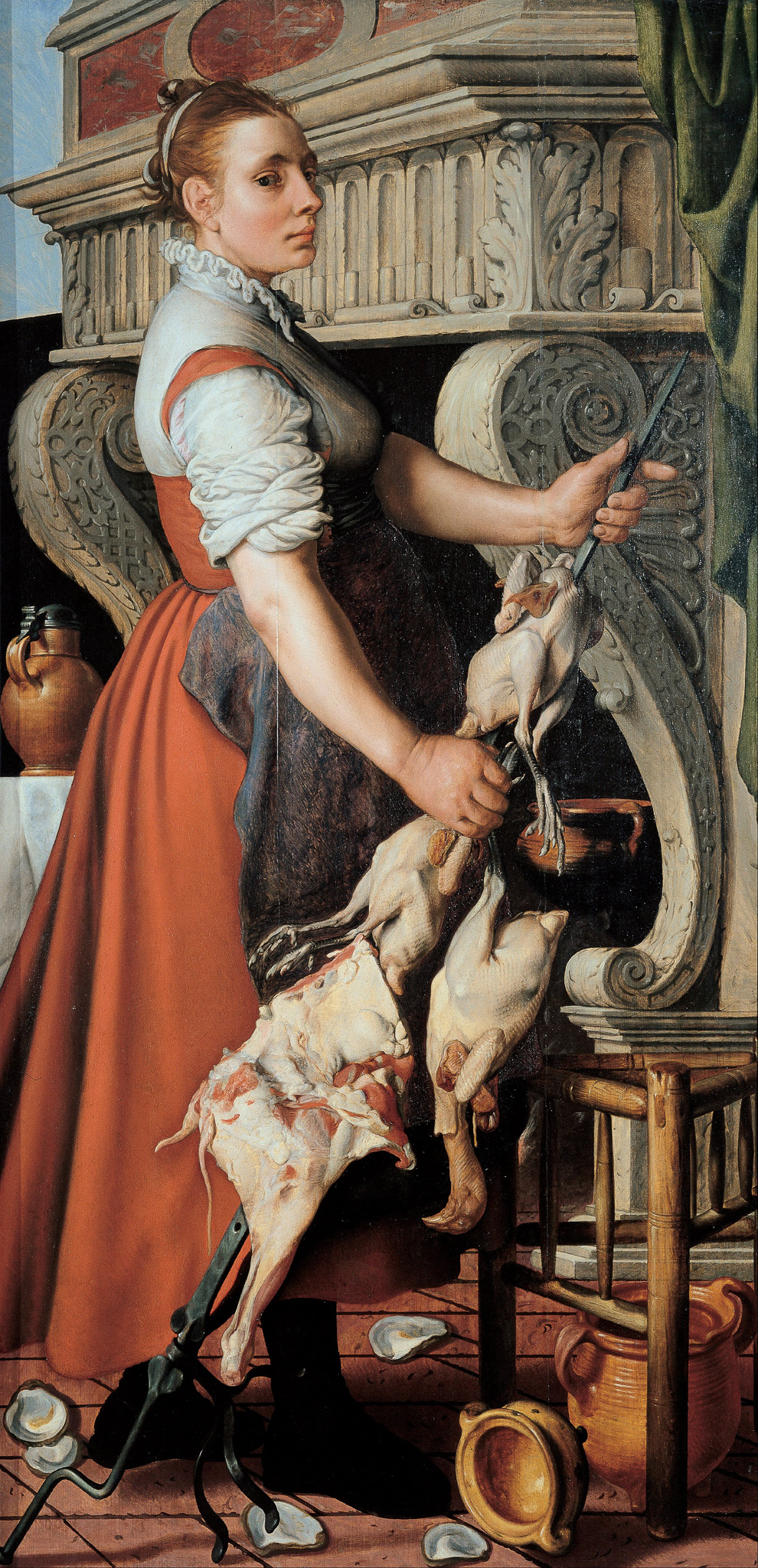Manual turnspits
The manual turnspit is an iron rod with a point at one end and a handle at the other. It was rotated on supports specially designed for the spit or multiple spits, or on the spit hooks of andirons or firedogs. By turning the spit, the food can brown and cook evenly on all sides. The use of spits has been documented since the 8th century BC, but they were likely used much earlier. Also, read more about them: Everything you need to know about antique roasting jacks
Cooking in the hearth with a turnspit supported by stands or andirons with spit hooks
In our collection of manual turnspits, you'll also find several turnspits with stands. Alternatively, you can find andirons or firedogs with spit hooks here. With the included stands, you often cook low to the ground on the coals in or before the fire. Conversely, using the firedogs ore andirons allows you to cook higher in front of the fire.
You can choose a combination of a turnspit with matching fire dogs on our site. Alternatively, we can suggest andirons for one or more manual turnspits. Fire dogs with spit hooks at various heights add extra versatility. Then, the spit can be adjusted to different heights. Additionally, an antique drip tray and meat baster complete the ensemble. On this page, we sell some of these hearth cooking accessories
Notice the craftsmanship
We sell manual turnspits made from the 17th – 18th centuries. Though simple in design, they are hand-forged and demonstrate craftsmanship. While they are still being made today, the old versions were built to last. Purchasing one is therefore a sustainable choice.
Origin of the manual turnspits
Almost all manual turnspits we sell come from France. Despite continued use over open fires, they are difficult to find there. They are made of wrought iron, sometimes with a wooden handle.
Consider the fire size for cooking with a manual turnspit
The manual turnspit (with stands or andirons) can stand either in the fire or on the ground before it. If the spit has low stands, grilling on coals is possible. In any case, the fire behind the spit must be monitored closely to ensure the food is roasted and cooked properly. This requires fireplace accessories (tongs, poker, blow poke, etc.) long enough to reach the fire safely.
Long spits on high stands or andirons are suitable for large fires, while smaller spits on low stands or fire dogs are for smaller fires. Ensure that the firedogs or andirons fit inside the hearth and do not protrude. The spit should fit in the hearth width-wise. Both manual turnspits and our dogs can be selected based on length, width, and depth.
Consider the decorative function of the manual turnspits
Manual turnspits combined with andirons or firedogs with spit hooks are often decorative. Together, they can enhance the hearth and the room. These combinations can also be a lovely addition to a fireplace no longer in use. Also, read: How do I decorate my unused fireplace like a real fireplace?.

